I’ve been in a lot of dry bean fields this week, mainly in Huron County. And I will admit that in a few fields, it was tough to sort out what was causing the damage. But so far, there are only one or two sites out of all of the ones I scouted that have even come close to having suspicious feeding that could be attributed to WBC. I say “could” though as I am still on the fence with these two sites since I have two additional culprits that could be doing some or all of the pod feeding.
What is making it difficult is that there are a lot of defoliating insects out there this year that are making holes in the leaves and even scars on the surface of the pods. This makes it tough to truly identify what is WBC feeding and what is from the others. So you really can’t rely on foliar feeding to ID plants with WBC on them. I am glad I had a sweep net with me to help me sort out some of the issues. Both green cloverworm and redheaded flea beetles are in high numbers this year and are hacking at the leaves.
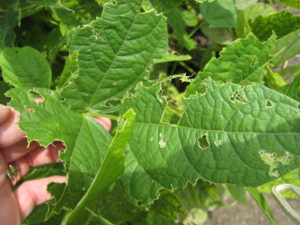
As for pod feeding, well that is not cut and dry either. Bean leaf beetle in particular is doing some of the pod feeding. Their holes rarely penetrate the pod though.
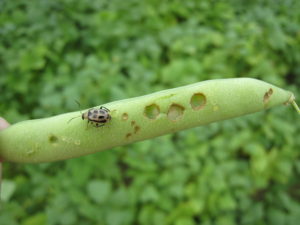
Make sure to look around in the canopy for BLB adults before assuming you have found WBC feeding. There seems to be a lot of pods out there that had BLB or grasshopper feeding early on and the holes have dried up or even healed over.
I even found a field so full of slugs in areas that I am convinced that the big holes going directly through the pods were from the slugs and not WBC. (Sorry Ron, I know you are pretty sure slugs don’t feed on pods but every time I found a big hole going through both sides of the pod, I found slime trails on the plant and big fat juicy slugs nearby on the ground).
WBC pod feeding tends to mine directly into the pod. Once you open up the pod you may see some feeding on the seeds. Here are some photos from pods that were on plants that were artificially infested and caged with WBC. Note the one pod that actually still had WBC inside it, though this is rare to find in naturally infested fields.
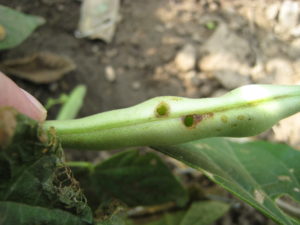
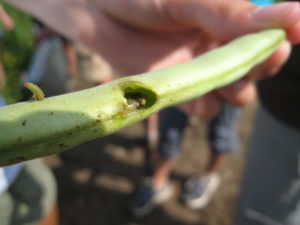
There is one more insect that I came across that can mine into the pod though. I found European corn borer feeding on the inside of one pod.
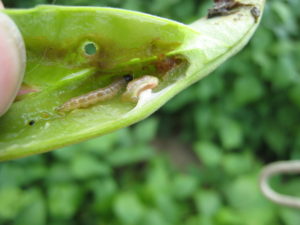
Luckly it was still in the pod making it easy to peg as the culprit. Unfortunately WBC is usually not inside the pod or on the plant during the day so you don’t get the satisfaction of being 100% confident in your judgement.
One final thing I learned this week. I know I told you about how the first few instars of WBC looks sort of like ECB but with obvious dark warts and hairs coming out of them on their body. Well, the second to third instars looks completely different.
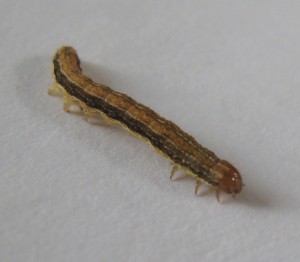
They still lack the broad bands behind the head but they lose the hairy warts/spots that the very young instars have and actually start to look like true armyworm without the bands on the prolegs. Until they get a bit bigger and start to get the broad bands behind the head, it can fool you into questioning what it is. Those stripes certainly don’t remain on the body later in their development.
If it isn’t already obvious, there is a lot still to learn about WBC. And it doesn’t seem to be an easy insect to scout for..especially in dry beans. I didn’t think I’d ever say this, but I like scouting for soybean aphids much more! Those I can find and count.
How did you know I would read your blog this week?